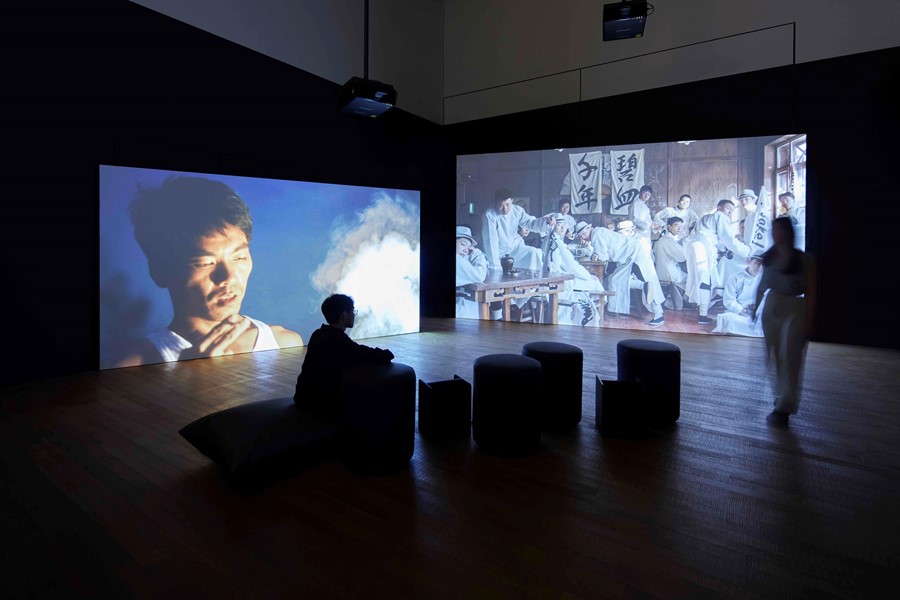On a trip through Hong Kong, Shanghai and Chengdu, AnOther delves into the artists and art institutions that are defining culture in China today
Hong Kong is a city designed to be viewed from an altitude. With the world’s largest number of skyscrapers – there are over 9,000 high-rise buildings, and more than 400 skyscrapers – nestled amongst the city’s winding highways and subtropical verdant mountains, walking through the city is a disorientating experience, like it’s built for cars, not humans. One of the best views of the city can be found at Salisterra, a panoramic bar on the 49th floor of The Upper House hotel that looks out onto Victoria Harbour, Kowloon side, with its glittering landscape of skyscrapers and enormous LED screens wrapped around the sides of buildings; no real-life city comes closer to the one depicted in Ridley Scott’s Blade Runner (the director cited the city as a major influence for his dystopian sci-fi). The notorious smog that cloaks the Hong Kong skyline, turning the sun and surrounding atmosphere a hypnotic, claustrophobic orange, only adds to the cinematic feel of the place. And with so many iconic film scenes set here – there’s policeman Qiwu chasing a mysterious girl in a blonde wig through a shopping arcade in Chungking Express, Maggie Cheung strutting up and down the city’s alleyways in exquisite cheongsam dresses in In The Mood For Love, and a gun-wielding confrontation between a gangster and a cop, set on a roof against the vast Hong Kong skyline, in crime thriller Internal Affairs – it’s easy to see why directors were so taken with this city; just like the films set here, Hong Kong is frantic, intoxicating, and full of colour, character, and life.
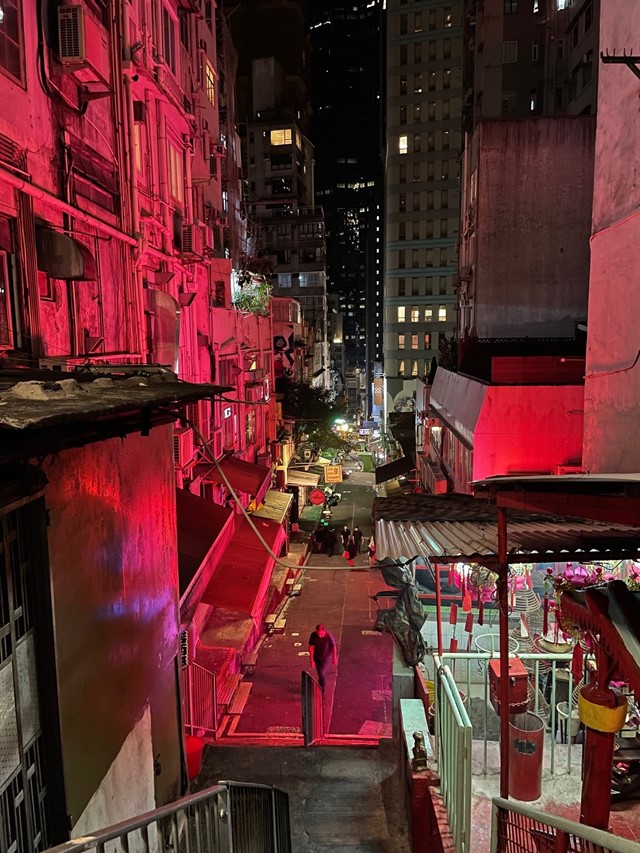
And sitting by the window in my hotel room on the 38th floor of The Upper House, it’s hard not to feel like Scarlett Johansson in Lost in Translation, wistfully gazing out at a foreign skyline through a pane of glass. Although we are surveying entirely different cities – her, Tokyo, I, Hong Kong – The Park Hyatt hotel, where most of Sofia Coppola’s beloved unfolds, is one of the main inspirations behind The Upper House, where rooms also have special nooks to sit and take in the view. Designed by Hong Kong-born architect André Fu, the hotel’s rooms are vast, warm and earthy, with lush wood panelling, soft lighting, sharp-edged bathtubs, and furniture upholstered in mossy green. The entrance hall of the hotel, which one passes through via an escalator, is a womb-like, bamboo-clad art installation in its own right. Nicknamed ‘The Lantern’, the structure was inspired by Torii temples; traditional Japanese gates found at the entrances of Shinto shrines that symbolically mark the transition from the normal, everyday world to the sacred. “There are elements I have been thinking about ever since my first visit to the Park Hyatt Tokyo,” wrote Fu of the inspiration behind the hotel. “I still remember vividly the old proportions and modernist lines, and to this day it remains one of my favourite hotels for its warmth and welcoming ambience.” The same can be said of The Upper House, a place that, despite being built vertically, has a calming, homely atmosphere.
A visit to M+, a museum opened in 2021 in the West Kowloon Cultural District of Hong Kong, is emblematic of the city’s booming arts scene. Some 25 years in the making, with a cost of over $750m dollars, and a square footage to rival London’s Tate Modern, the Herzog & de Meuron-designed building is a rich, expansive testament to some of East Asia’s most innovative artists. On a tour of the space, lead curator of design and architecture, Ikko Yokoyama, insists on the museum’s status as a harbinger for ‘visual culture’, not ‘art’ with a capital A – the aim being to break down boundaries between disciplines like architecture, photography, furniture and sculpture. The most interesting works on show – and there are many – include the Kikkoman soy sauce bottle (designed by Kenji Ekuan), a poetic transparent chair with red roses suspended inside and a wood-panelled Tokyo sushi bar opened in 1988 (Shiro Kuramata), an Issey Miyake advert from the 90s, disorientating video art by Cao Fei, an absurdist ‘laughing men’ painting by Yue Minjun, explosive gunpowder paintings by Cai Guo-Qiang, and performance art by members of the daring 90s Chinese art collective Beijing East Village. For those unfamiliar with Japanese and Chinese art, there are many, many new names to discover and relish in.
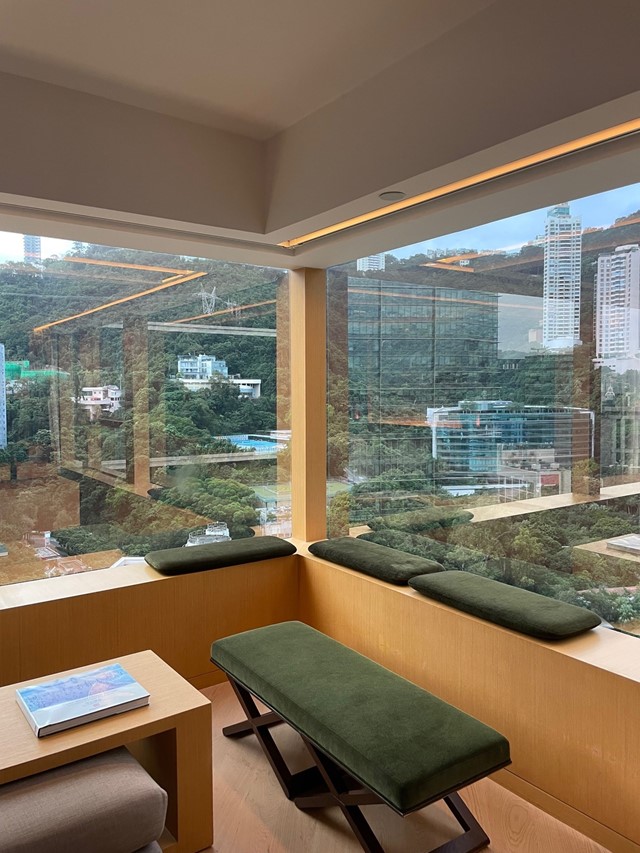
After a Chinese breakfast at The Upper House of chicken congee (milky rice porridge), fluffy barbecued pork buns, dim sum, stir-fried noodles and youtiao (a golden-brown deep-fried strip of wheat flour) – the unfettered gluttony of eating a full, savoury meal at 7am is not lost on me – we travel from Hong Kong to another one of The House Collective’s hotels, The Middle House in Shanghai. There’s more food in Cathay Pacific’s first-class lounge at Hong Kong International Airport, with a bowl of warming wonton noodle soup, some chicken fried rice, and bao for lunch. The lounge itself, designed by Ilse Crawford, is a design destination in its own right; there’s a lush entrance hall in green onyx, cosy wood-panelled ‘day suites’ overlooking the airport runway, private workstations, foot and head massages on offer, shower pods, a noodle bar, a 24-hour pantry, and a retro Parisian-style cafe clad in timber. Spending time here, it’s easy to forget you’re in transit. In fact, this is the kind of place you don’t want to ever leave.
Although less Westernised than Hong Kong – the region was a British colony for over 150 years, until the handover in 1997 – Shanghai still feels like a distinctly global city. A bike tour across the city with Culture Shock begins in the Former French Concession, a leafy neighbourhood and popular tourist destination nicknamed “the Paris of the East” thanks its status as a settlement for the French since 1849. A visit to the neighbourhood’s Fuxing Park is an eye-opening, emotional glimpse into how public space here is utilised to foster a sense of community and togetherness; when we visit at 10am on a Thursday morning, the city’s elderly community are waltzing enthusiastically in their finery, singing in choirs, playing cards and Mahjong, practising tai chi, or doing earth calligraphy (using clear water as ink on the ground, which later evaporates). Later, a trip to the Buddhist Fazangjiang Temple, built in 1929 and nestled within one of Shanghai’s traditional shikumen-style residential blocks, is a time-stopping reminder of how the old coexists with the new in Shanghai; with its glowing shrines, incense, and smoking fire pits, the atmospheric space is a peaceful sanctuary in the middle of a bustling city. We finish off the day with a visit to the Long Museum in the West Bund, a vast concrete building next to the Huangpu River, flanked by a disused 1950s coal-hopper unloading bridge outside – a lost relic of Shanghai’s industrial culture. Inside the museum, a haunting solo exhibition by Chinese painter Huang Yuxing brings themes of intimacy, queerness, and art-making to the fore.
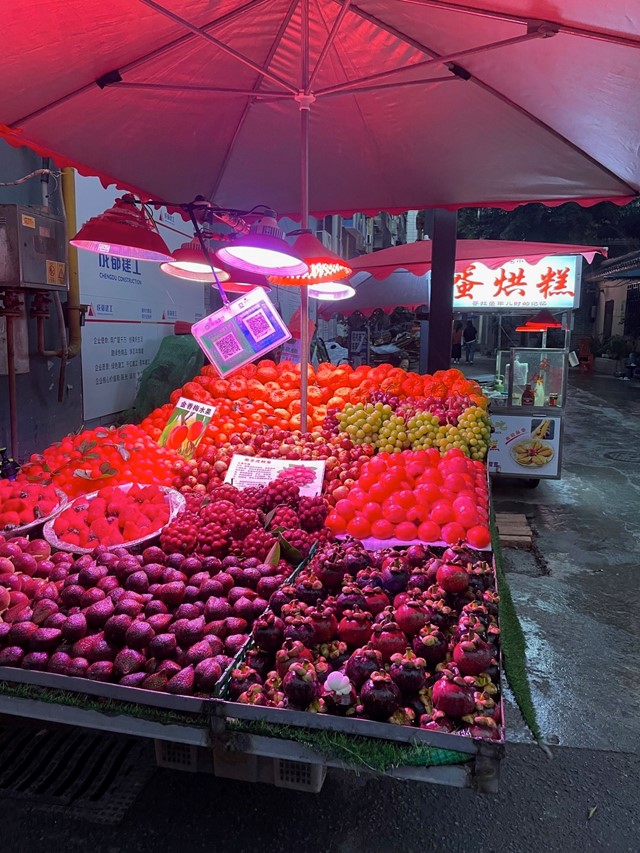
In the evening, guests at The Middle House in Shanghai are treated to an affecting musical performance by music producer Vicky Fung and media artist Keith Lam exploring the sensory nature of travel. Now in its third iteration, the hotel’s biennial program this year focuses on the theme of ‘art meets tech’, with Fung and Lam creating poetic silver sculptures with sounds evoking the differing sensory experience of four cities: Hong Kong, Shanghai, Beijing, and Chengdu (each of which has a hotel by The House Collective). The soundscapes were inspired by biometric data captured by high-tech watches worn by travellers – physical data that reflects one’s internal mood.
Life in Chengdu – our final destination – unfolds at a slower pace than in Hong Kong and Shanghai, something its residents are very proud of. With a rainy climate, a ubiquitous tea culture (there are over 10,000 tea houses in the city), stunning nature (the surrounding area, Chengdu Plain, is known as the ‘Country of Heaven’), and numerous reserves for giant pandas – China’s national treasures – Chengdu is a fascinating alternative to the fast-paced urban sprawls of China’s more famous cities (although Chengdu is still enormous, with a population of over 20 million). The food here is phenomenal, too; as the capital city of the Chinese province of Sichuan, the local cuisine is famous for its use of spice, with Sichuan pepper a fiery staple (during our meals there, the locals encourage us to eat so much spice that our tongues go numb – here, apparently that’s a good thing). Hot pot is huge in Chengdu – a spicy, communal dish where chicken or vegetable stock is simmered in a pan at the table, and meat, fish and vegetables are cooked as you eat. Locals joke that it’s the perfect meal for the winter months, since the steaming liquid heats up the house for free. When we have dinner at a hotpot restaurant in Kuan Alley and Zhai Alley, an ancient Chengdu street selling souvenirs and local folk art, two huge orange cubes of stock are mixed with hot water in a decorative gold bowl at the centre of the table, while prawns wrapped in white fungus, dried mushrooms, meatballs, white fish and salad are slowly piled into our bowls – which contain a base sauce of sesame oil, spring onions, and parsley – over the duration of the meal. By the end, my belly is full, my tongue is indeed numb, and the windows of the restaurant are dripping wet with condensation.
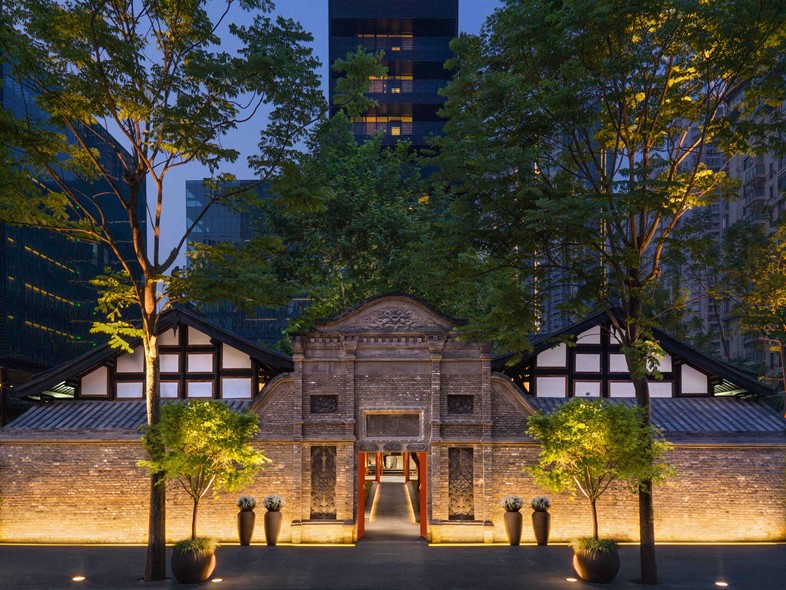
At Mi Xun Teahouse, a Michelin-starred restaurant by The Temple House (open to the public as well as guests), the dinner on our final night is a transcendent exercise in Sichuan-style vegetarian food, infused with delicate flavour. A farm-to-table, zero-waste tasting menu with nine courses, many of the dishes were inspired by executive sous chef Tony Xu’s childhood memories of growing up in the Sichuan countryside. The emotion of the meal is palpable; in the restaurant’s tranquil, open-air teahouse, dishes of marinated baby watermelons and baby courgettes (smaller than a fingertip, with miniature courgette flowers sprouting from their ends), sweet and sour chestnuts, braised Ma Po tofu in wild mushroom sauce, green handmade spinach noodles, and a milky walnut and oak pudding are served; they are among some of the best things I’ve ever eaten.
The entrance to The Temple House, like almost everything I’ve encountered in China, is a remarkable mix of old and new. With a facade built over 150 years ago in the Qing dynasty, the architects have taken the temple and updated it into a mesmerising courtyard, with floating red lanterns, and a library and an art gallery on either side. Meanwhile, subtle patterns on the exterior of the hotel buildings echo that of bamboo shoots – a staple in Sichuan cuisine – and grassy mounds in the courtyard recall the ridged, bulbous fields of tea plantations surrounding Chengdu. Stepping out of the bustling city and into the quiet serenity of The Temple House, it feels as if I’ve got one foot firmly in the past, and another in the present – each constantly reinforming and reinforcing the other.
Violet Conroy was a guest of The Upper House in Hong Kong, The Middle House in Shanghai, and The Temple House in Chengdu. Find out more about The House Collective hotels here.
